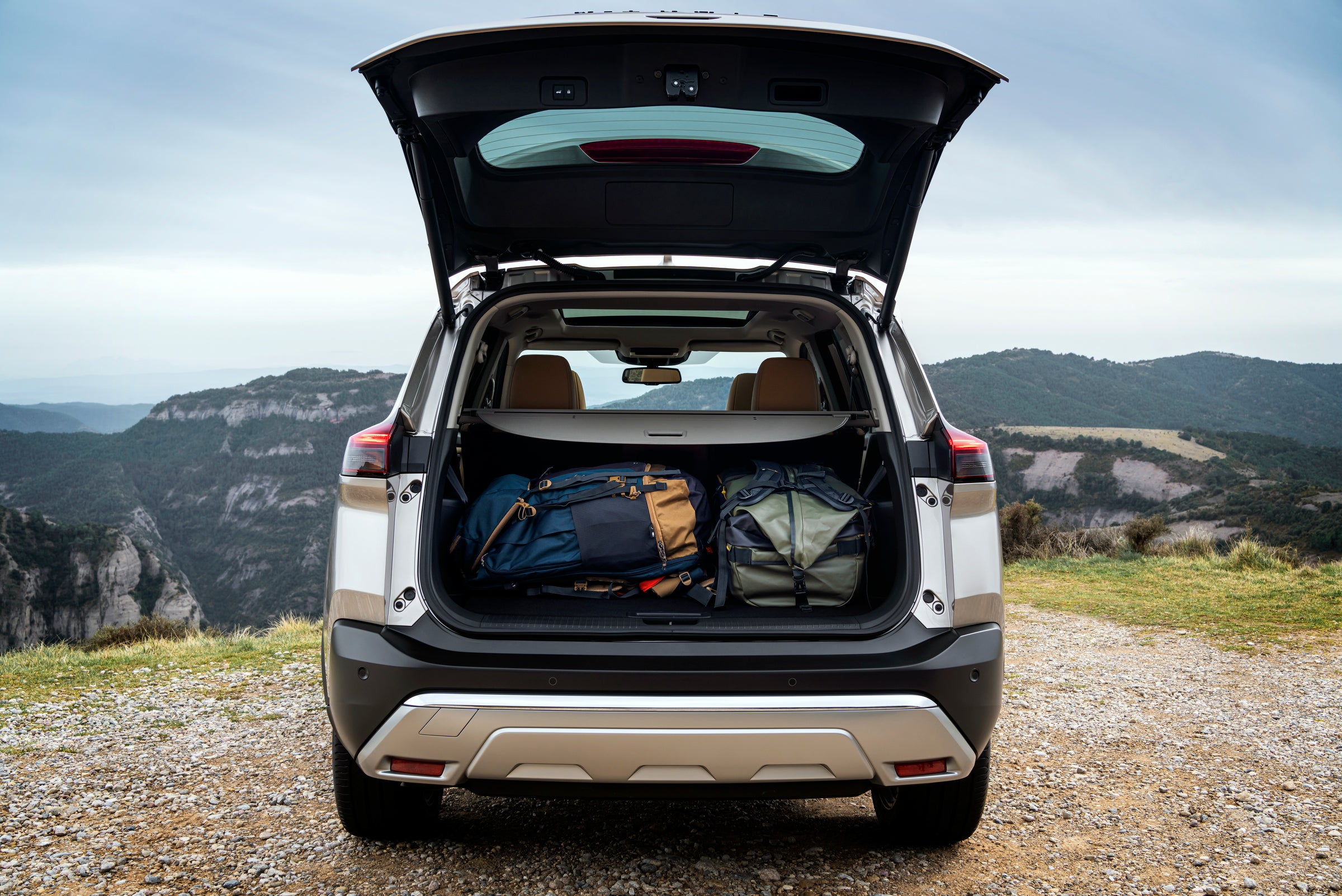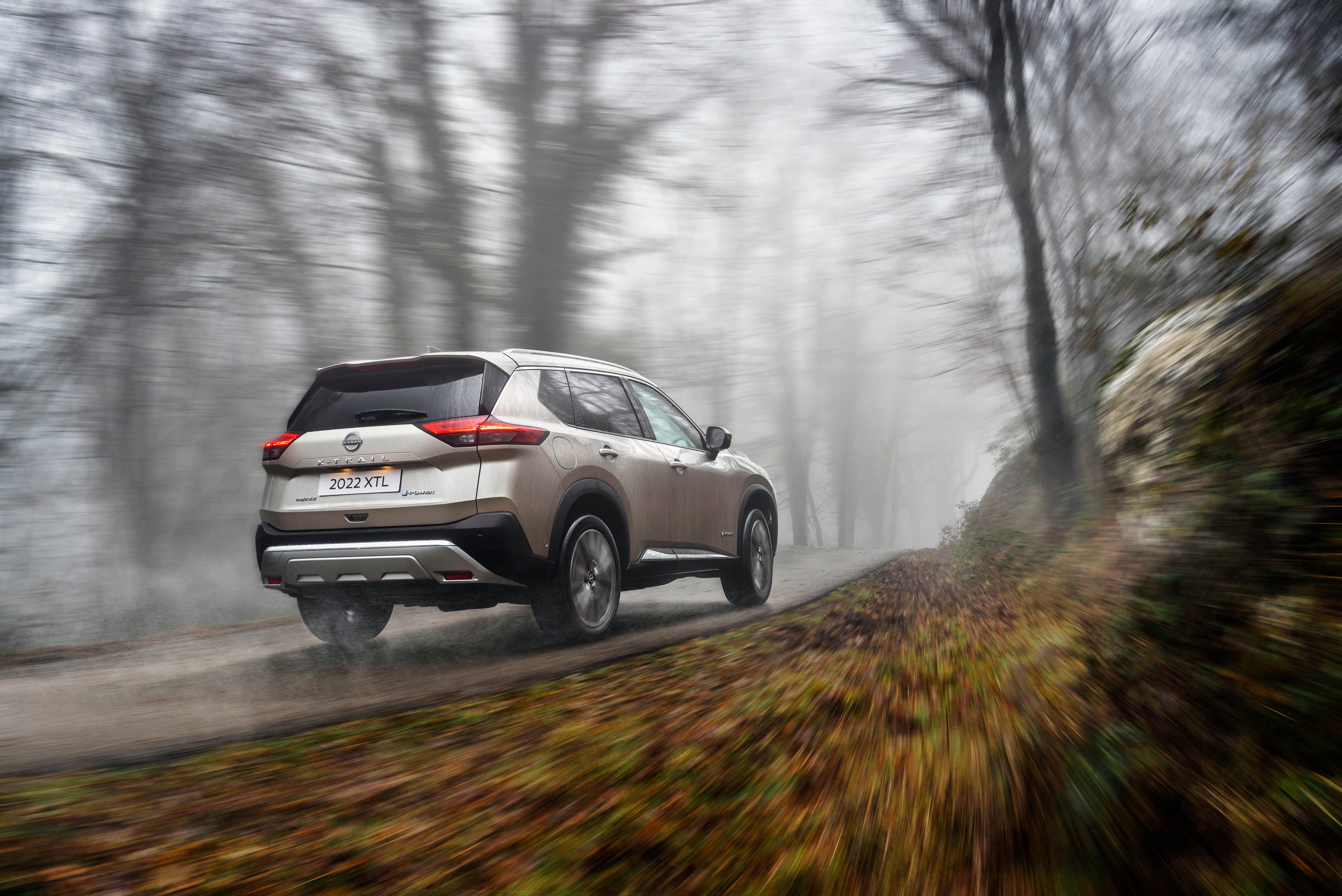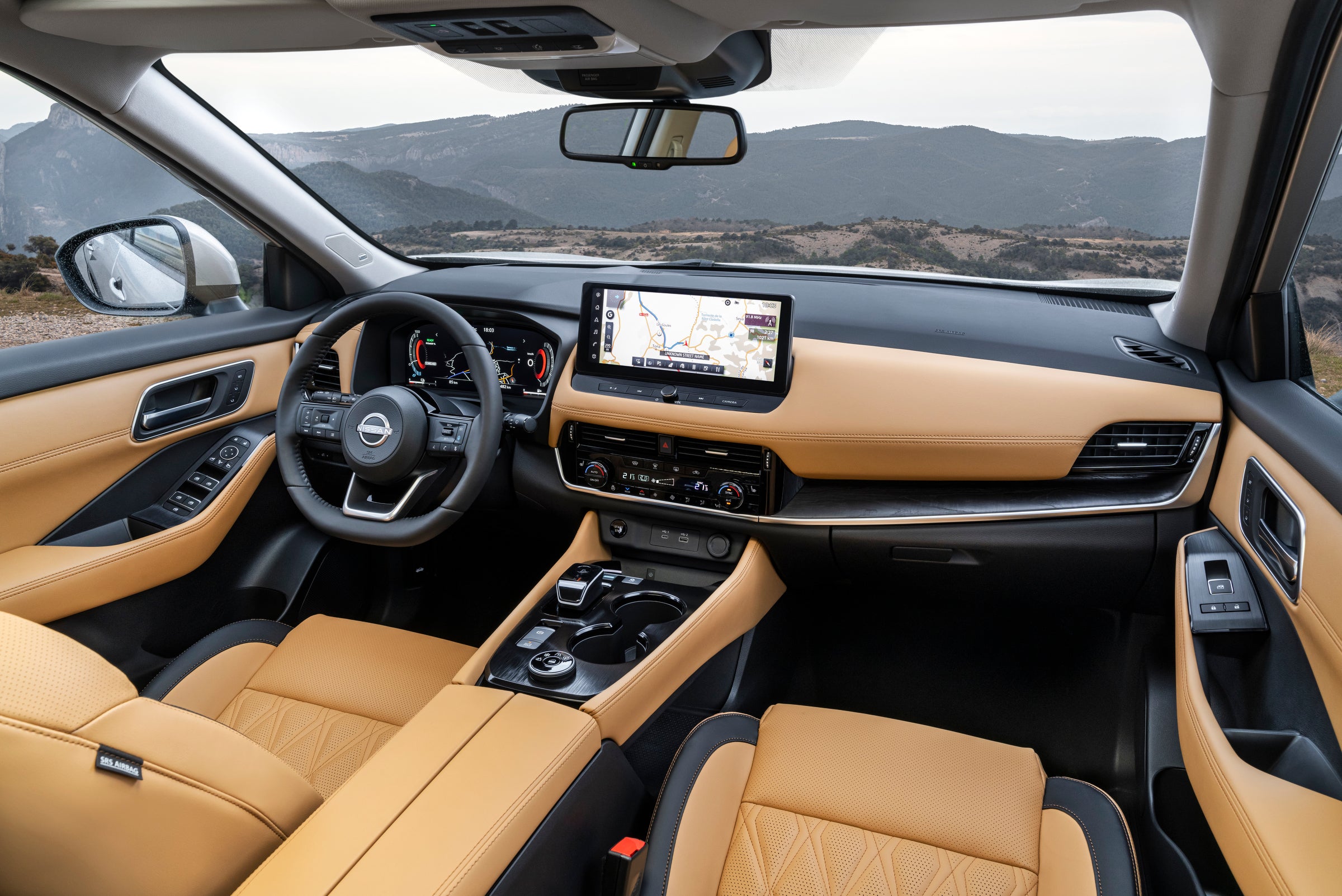
To look at the new Nissan X-Trail e-power, you’d think there was nothing particularly clever about it. It’s a “medium-sized” (by modern standards) SUV that comes with five- or seven-seat configurations, and two- or four-wheel drive, and a range of trim levels. It’s pleasantly styled, in an evolution from the inoffensive lines of the familiar old model that has been around since 2017 and served many households well.
The back end has a more jagged, funkadelic contemporary look, like the latest Qashqai and all-electric Ariya, and a slightly more assertive sort of “face”. It’s also as practical as ever, especially if you opt for the darker colours for the interior (they don’t show the muck). But the X-Trail of today is much, much more than reliable transport for people with kids and dogs.
Enter, in fact, a remarkable piece of technology. Most X-Trail models now come with something called “e-power”. This isn’t just a bit of clever marketing (well it is, but there’s more behind it than usual). This is a car that is powered by a petrol engine and by an electric motor and a lithium battery pack, but it’s not a conventional hybrid as we have come to know them.
The petrol engine plays no direct part in driving the wheels at any time, and its sole function is to generate electricity, from petrol of course, that is stored in the onboard battery pack, and the battery then sends pure electrical power to the wheels. So the driving experience is more or less identical to what it would be in a similar electric car – smooth, near-silent running (when the petrol engine isn’t needed to “make” electricity) and strong acceleration.
THE SPEC
Nissan X-Trail e-power E-4ORCE Tekna+
Price: £46,580 (as tested; range starts at £32,030)
Engine capacity: 1.5petrol 4-cyl powering elec motor
Power output (PS): 213
Top speed (mph): 111
0 to 60 (seconds): 7.2
Fuel economy (mpg): 42.8
CO2 emissions (WLTP, g/km): 152
On the other hand, and unlike an all-electric vehicle, you can never run out of range, at least provided you can get to a petrol station. I suppose you could plug the car in to recharge the battery, as with other plug-in hybrid cars, but Nissan doesn’t allow you to do this. Not needed, they’d argue, and I suppose it would add a little more weight. By the way, there’s no diesel version.
So you could think of the relatively small petrol engine (1.5 litre) as really a kind of mobile mini-power station dedicated to running your electric vehicle. It’s an extreme version of the “range extender” technology that was around on battery electric models such as the Vauxhall Ampera and some BMW i3 models, and occasionally applied to vehicles such as the LEVC taxi cabs. Like a conventional hybrid, such as the Toyota Prius, the X-Trail e-power (and its Qashqai e-power sibling) will regenerate some wasted power from braking to top up the battery, almost all of its energy comes from burning petrol.

It’s all extremely impressive, and it does lend your X-Trail a serene quality, but I do wonder what the point is, frankly. As with the various proposals to run cars in hydrogen fuel cells, there doesn’t seem an awful lot of point in converting one energy source (fossil fuels and mechanical power) to another (electricity), not least because you inevitably lose some energy along the way in the process, and because all the added weight necessarily reduces the efficiency of the car. That’s true of conventional hybrids and plug-in hybrids as well, by the way.
For many families, and leaving aside the environmental aspects for a moment, there is still a lot to be said for the dear old internal combustion engine, not least cost. There’s also been such breathtaking progress in the battery-only electric car with single-charge ranges of 200 miles-plus not uncommon, that it too is now an increasingly practical proposition. But the inbetweeners?

Maybe we shouldn’t get too tied up with this theoretical stuff, though. As a halfway house, Nissan has done an excellent job of making the X-Trail and it’s e-power set-up work. Despite, and because, of all the technology on board, it will deliver, in my experience, about 38mpg, and that’s with the optional all-wheel drive E-4Orce system fitted and an electric motor on each axle – and be good for all terrains, including special snow and mountain settings. It performs smoothly and briskly, and the handling is as good as it can be for a heavy, tall beast such as this. Indoors you have all the tech you need, including Nissan’s admirably intuitive ProPilot semi-autonomous driving system. Everything, including the nice big touchscreen, works very well.

Of course the extra premium of about £2,000 for the e-power system won’t suit everyone, and a baseline “Visia” trim two-wheel drive mild hybrid version is available at about £32,000. At the other end, buyers who prefer truly pure electric propulsion can opt for the striking new Ariya at about the same cost as the top-of-the-range X-Trail e-power, in lavish “Tekna+” trim, and of course there are more and more competitors around (try the Cupra Formentor and DS7 for something different).
Rather like when the motor car was in its infancy, when steam, electric and internal combustion and all manner of other technologies were vying for supremacy, we have a striking, indeed bewildering, range of choice for our personal transportation. Though it looks a bit unprepossessing, Nissan’s epower Qashqai and X-Trial models are just two more of the many new flowers blooming.







